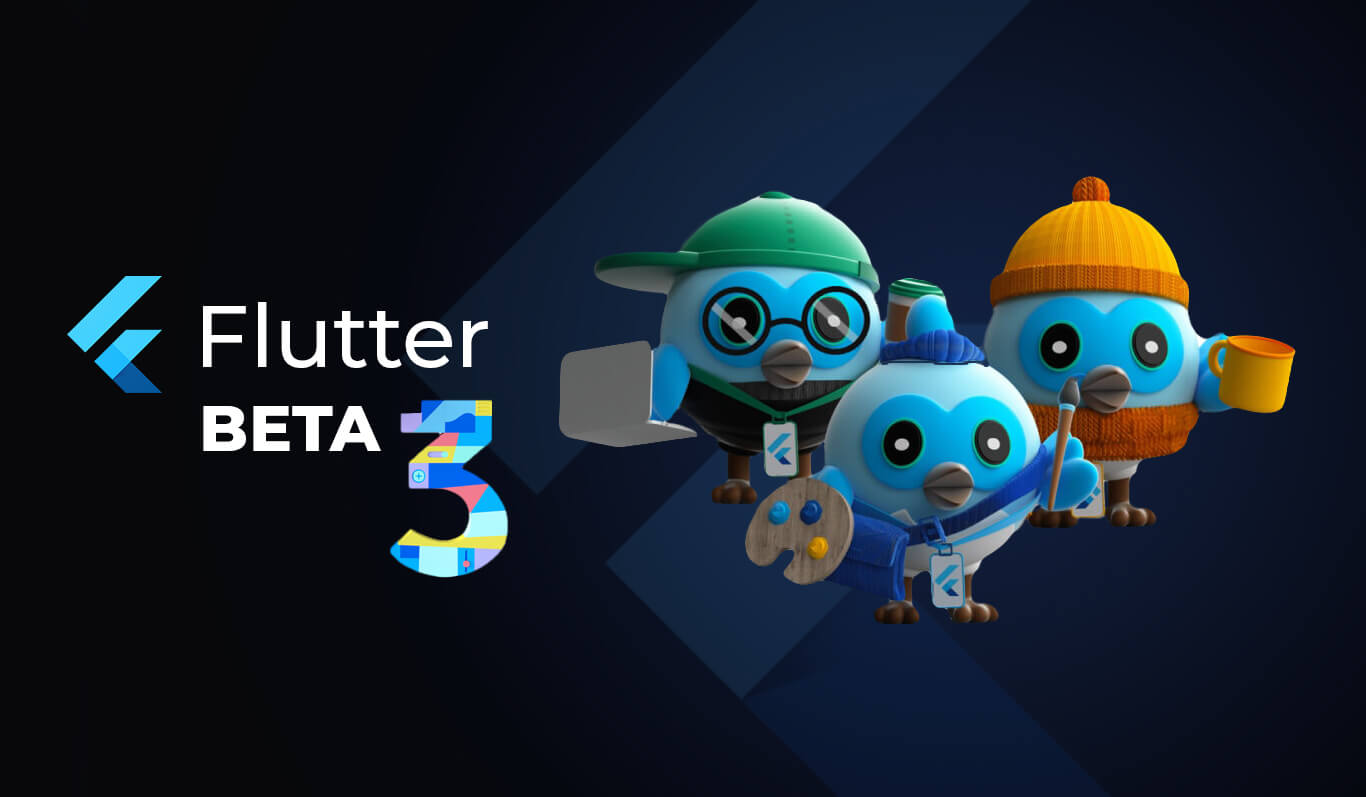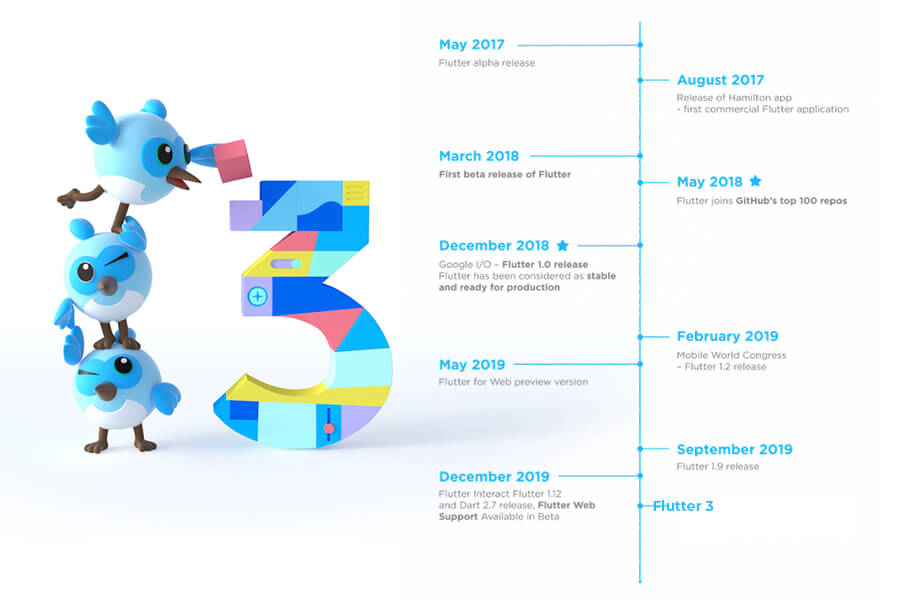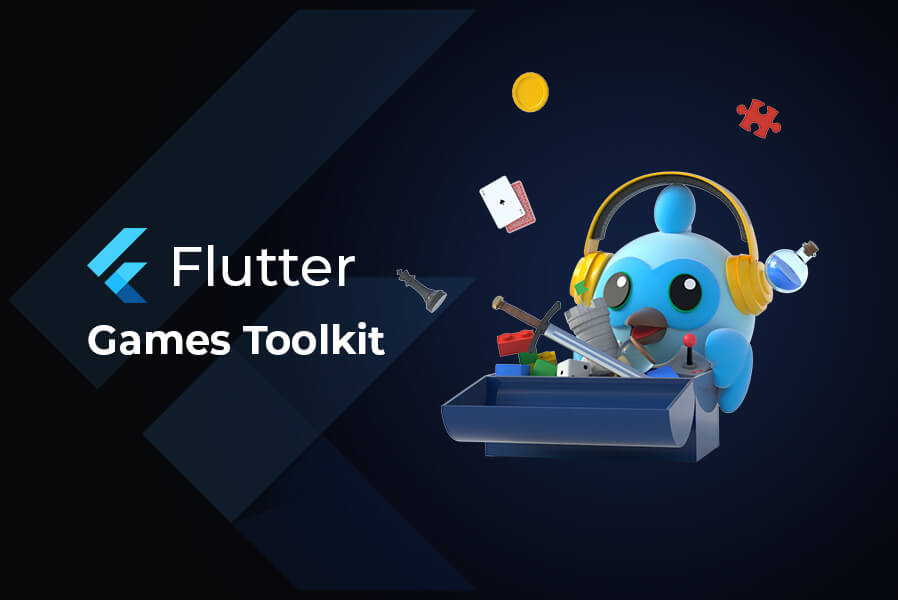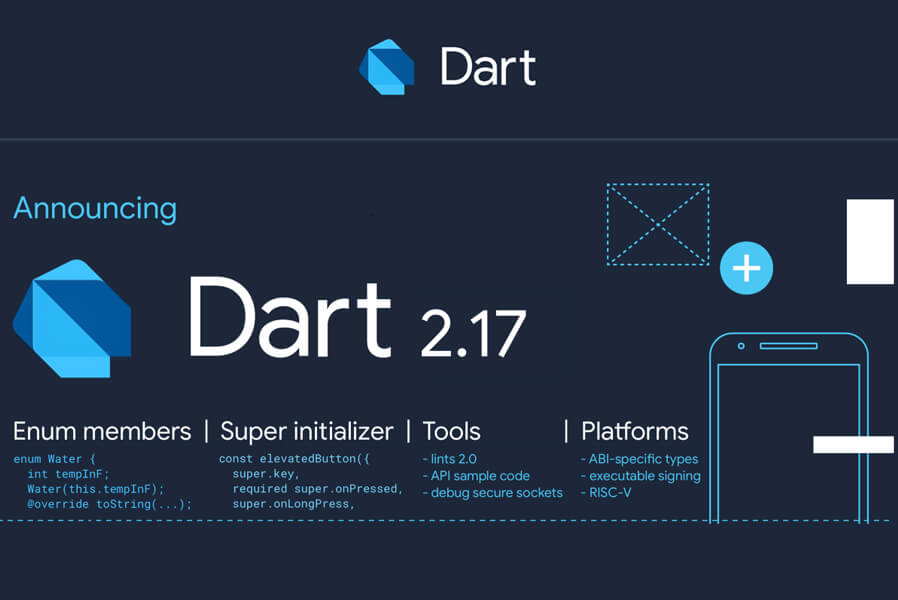FLUTTER BETA 3: FEATURE UPDATES AND IMPROVEMENTS YOU NEED TO KNOW

The world of cross-platform just got a little more interesting with the latest release of the Flutter Beta 3 version.
Post Highlights:
- Google announced Flutter 3 at its Google I/O conference, which adds support for macOS and Linux, making Flutter's cross-platform roadmap complete.
- The new beta version also includes support for Apple Silicon and Casual Game Toolkit.
- Now that Flutter 3 apps are compatible with Mac and Linux, Flutter 3 apps can be developed on six different platforms using the same Dart codebase.
- Flutter 3 is available for macOS, Android, Web, and Windows in addition to macOS and Linux.
- Flutter 3 also provides Material 3 support, which is the foundation of the Flutter interface. Among its many features are dynamic colour support, better typography, and improved components.
Introduction
Flutter is a software framework developed by Google several years ago with the goal of building cross-platform applications. Designed to compete with platforms like React Native, the library incorporates native performance and platform support with portable UI toolkits' faster development and multiplatform reach. Flutter apps are built with Dart, a programming language created by Google.
Flutter 3 is unique in that it lets you create applications for Android, iOS, Linux, Windows, macOS, and the web, all using the same shared code.
Although building applications for Windows was made easier with Flutter 2.10, neither macOS nor Linux was fully supported. The situation has changed now, as Google announced Flutter 3 at this year's Google I/O, with support for building apps on both Mac OS X and Linux.

What’s New in Flutter 3?
Stable support for macOS and Linux
A platform support package includes support for new input and interaction models, compilation and build, and accessibility and internationalization as well as platform-specific integration. Flutter 3 gives Flutter app developers the ability to build Flutter apps by utilizing the underlying operating system while sharing UI and logic.
Using macOS Universal Binary support, you can package executables that run natively on both architectures of the OS.
Canonical and Google have collaborated together to provide the most integrated development platform on Linux.
Apple Silicon
In this version, Flutter is now fully compatible with Apple silicon. While Flutter has been compatible with M1-powered Apple devices since their release, Flutter now fully utilizes Dart's support for Apple silicon, allowing much faster compilation on M1-powered devices.
Material You (Material Design 3) Widget

Material Design 3 is a proprietary Google design language. To create Flutter apps that are visually stunning and interactive, the Flutter team has built a cross-platform design system. The features included are:
- Adaptive colours
- New buttons
- New app menu
- Variable font support
Flutter Firebase
Firebase is now fully integrated with Flutter, making it a core part of their offering. Firebase is Google’s back-end platform for building mobile and web applications. Flutter has various third-party integrations like Firebase, AWS Amplify, Sentry, and AppWrite. Flutter developers need a complete set of tools to build, debug, and release apps. A few of these services are data storage, authentication, device testing, and cloud functions.
Firebase Crashlytics
The updated 3.0 version of Flutter includes Crashlytics support for apps. Crashlytics is Firebase’s popular real-time crash reporting service.
Now that the Flutter Crashlytics plugin has been updated, you can track fatal errors in real-time, giving you access to all of the same features used by other iOS and Android developers. Apps can be monitored for stability through alerts and metrics such as "crash-free users.".
Crashlytics has been updated to cluster Flutter crashes more quickly, making it easier to identify, prioritize, and fix issues. Crashlytics has also simplified the plugin setup process, so it takes just a few clicks to integrate it with your Dart code and get Crashlytics up and running.
Flutter Games Toolkit

The newly released version of Flutter caters to the growing community around casual game development, utilizing Flutter's hardware-accelerated graphics support combined with open-source engines like Flame.
The Casual Games Toolkit in Flutter 3 provides starter templates and best practices along with credits for ads and cloud services.
How Has Flutter 3 Improved Performance?
Using benchmarking to evaluate the benefits of optimization, the Flutter engineering team takes the performance improvement of Flutter to the next level. Furthermore, the opacity animation performance for simple cases has been improved.
Opacity widgets that comprise a single rendering primitive, for instance, do not implement the saveLayer method, which is usually called by Opacity instead.
Using the drawing operations costs that it contains, Flutter 3 calculates the rendering picture complexity. In this way, memory usage is reduced without compromising Flutter app performance.
Mobile Updates
In Flutter 3, Android and iOS platforms have been given some significant modifications.
Foldable device support
The all-new Flutter release incorporates foldable mobile devices. The latest widgets and features allow you to build dynamic and appealing experiences for the eye on foldable devices. This feature was designed in collaboration with Microsoft.
Support for varying refresh rates on iOS
As of the new release of Flutter on iOS devices, including iPad Pro and iPhone 13 Pro, variable refresh rates and ProMotion displays are supported. You can now render at refresh rates as high as 120Hz. With smooth scrolling, fast animations will appear more fluid.
Web Updates
Some significant enhancements have been made, particularly improvements in performance.
Faster image decoding and scrolling
With Flutter 3, Flutter app developers can decode images asynchronously off of the main thread. Images are encoded by the browser's built-in codecs. Using this technique, the image is decoded twice as fast, and the main thread is never blocked by the previous junk.
App lifecycle API
You now have control over the way in which your app bootstraps thanks to the new Flutter web app lifecycle API. Additionally, you can leverage desktop support for your app. The enhanced web codec API also offers faster scrolling with a high probability of achieving 60 fps while decoding images.
Additional Exciting Features of Flutter 3
Let us have a look at some additional add-on features of Flutter 3.
Theme Extensions
With the extension of ThemeData, you can now add anything to the material library. By mentioning ThemeData.extensions, instead of extending ThemeData and implementing copyWith, lerp, etc., you can avoid duplicate programming. ThemeExtensions can also be provided as a package developer.
Ads
The latest version of Flutter 3 supports publisher needs for making personalized ads and managing Apple's App Tracking Transparency (ATTT) requirements. Google provides its own User Messaging Platform (UMP) SDK as a replacement for the open-source Consent SDK.
Dart: Flutter App Development

Dart 2.17 will be released simultaneously with Flutter 3. Among its key features are portability and productivity. This release includes new language features such as enums with members, superclasses with parameter passing, and named parameters with more flexibility.
Additionally, Dart linter package:lints and C interop are now improved by dart:ffi. Some of the new features included are:
- Enhanced enumerations
- Super constructors
- Name args can be put anywhere
Conclusion
Flutter 3 demonstrates Google's commitment to multiplatform UI development across the web, mobile, and desktop. Flutter 3 completes the transition from mobile-centric to multiplatform, adding support for macOS and Linux desktop apps, Firebase integration improvements, productivity and performance enhancements, and Apple Silicon support. Flutter’s efforts to establish itself as an innovative platform that continues to benefit businesses of varying sizes and capabilities around the world are awe-worthy and deserve to be appreciated. The cross-platform future that Flutter 3 projects looks bright and promising.
FAQs
What is Flutter 3.0 release date?
Flutter 3.0 was released on May 11, 2022 at Google I/O 2022 Edition, featuring macOS and Linux support, as well as Material Design 3.
What makes Flutter ideal for cross-platform app development?
With the release of the 3.0 version of Flutter, it now provides stable support for macOS and Linux. You now have the chance to build apps for Flutter that will run on six different platforms while utilizing the same Dart codebase. Flutter is also supported by iOS, Android, Web, and Windows in addition to macOS and Linux.
Request a Quote
Categories
Popular posts
Best Practices for Software Product Engineering Every CTO Should Implement
2023-14-18How to Build Your Own On-Demand Carpooling App Services?
2023-08-25How to Start an On-Demand Fuel Delivery Business: A Comprehensive Guide
2023-07-28Empowering Miners: How Fleet Management Apps are Transforming the Mining Industry?
2023-07-21A Complete Guide to Develop a Food Delivery App for Restaurants in 2023
2023-07-08Mobile Apps Transforming the Travel Industry: A Game-Changer in Travel Planning and Experience
2023-07-07
